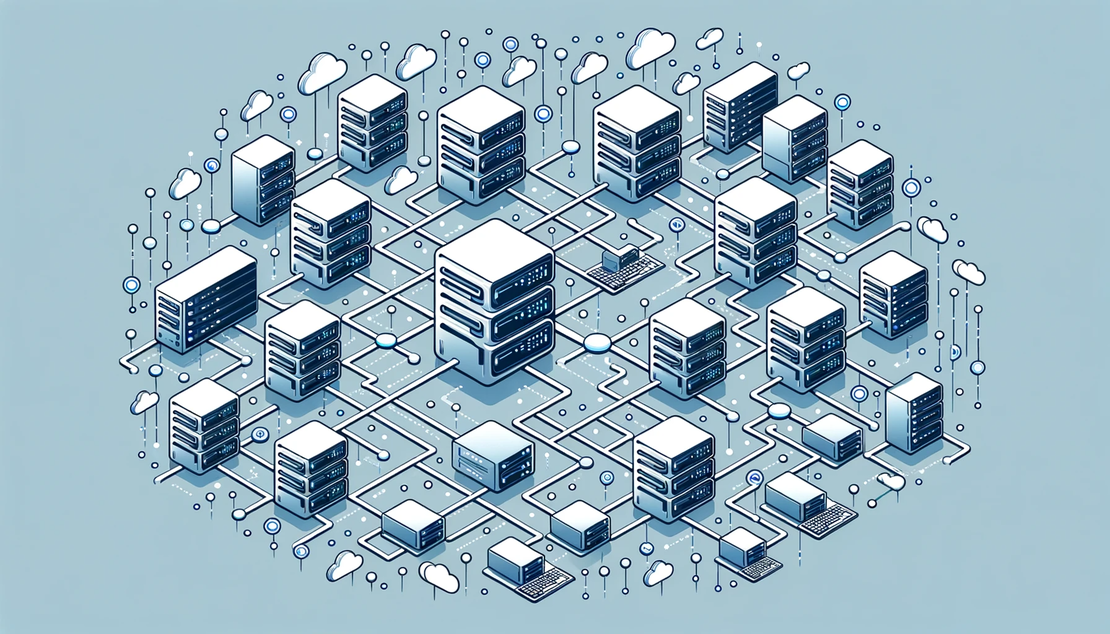
Securing the Digital Frontier: Security in Distributed Systems
- Yuhang
- Internet , Cloud
- September 15, 2023
Security is a pivotal aspect of dependability in distributed systems, encompassing confidentiality, integrity, and the assurance of secure communication.
The Role of Security in Dependability
- Confidentiality and Integrity: These are key elements of security, ensuring that sensitive information is kept private and unaltered during transmission and storage.
- Secure Communication and Authorization: Ensuring secure communication channels and proper authorization protocols are vital for maintaining the security and dependability of distributed systems.
Understanding Security Threats
In the context of distributed systems, it’s crucial to understand and categorize various security threats to develop effective countermeasures.
Categories of Security Threats
- Interception: Unauthorized access to information, leading to confidentiality breaches.
- Interruption: Disruption of services, causing system unavailability.
- Modification: Unauthorized alteration of data, undermining data integrity.
- Fabrication: Creation of counterfeit data, leading to deception and misinformation.
Implications on System Security
- Vulnerability Assessment: Understanding these threats is crucial for assessing system vulnerabilities and implementing necessary safeguards.
- Holistic Security Approach: Security measures must address all these categories to ensure comprehensive protection of the distributed system.
Types of Attacks and Their Impact
Differentiating between various types of attacks is essential for understanding their potential impact and for formulating appropriate security responses.
Active vs. Passive Attacks
- Active Attacks: These involve modification or disruption of data, such as message tampering and denial of service attacks. They have a direct impact on system integrity and availability.
- Passive Attacks: Passive attacks, like eavesdropping, involve unauthorized listening to or observation of data transmission. They primarily threaten data confidentiality.
Specific Attack Examples
- Eavesdropping: Unauthorized interception of private communications.
- Masquerading: Impersonation of a legitimate user or system.
- Message Tampering: Alteration of message content.
- Replay Attacks: Reusing valid data transmission for fraudulent purposes.
- Denial of Service (DoS): Overwhelming system resources to disrupt services.
Mechanisms for Security Protection
Implementing robust security mechanisms is essential for protecting distributed systems against various threats and vulnerabilities.
Key Security Mechanisms
- Encryption: The process of encoding messages to protect confidentiality and integrity. Encryption is crucial for securing data in transit and at rest.
- Authentication: Verifying the identity of users or systems to prevent unauthorized access. It often involves credentials like passwords, tokens, or biometric data.
- Authorization: Determining access rights and permissions for authenticated users or systems, ensuring that they can only perform allowed actions.
- Auditing: Keeping records of system activities to detect and investigate security breaches or policy violations.
Security Policies and Trade-offs
Establishing and implementing a well-defined security policy is critical for managing the security of distributed systems, balancing the trade-offs between security measures and system usability.
Importance of Security Policies
- Guiding Framework: A security policy provides a guiding framework for what needs to be protected and how. It outlines the rules, standards, and practices for managing security.
- Adapting to System Needs: The policy must be tailored to the specific needs and context of the system, considering factors like the sensitivity of data and the nature of operations.
Balancing Costs and Benefits
- Security vs. Usability: Overly stringent security measures can hamper usability and system performance. Finding the right balance is crucial for effective security management.
- Cost-Benefit Analysis: Implementing security measures often involves a cost-benefit analysis, weighing the risks against the resources required for mitigation.
Design Issues in Secure Distributed Systems
Effective security design in distributed systems involves several key considerations, ensuring that security mechanisms are integrated seamlessly and efficiently.
Focus of Control and Layering
- Centralized vs. Decentralized Control: Deciding between centralized and decentralized control of security mechanisms can impact the system’s flexibility and resilience.
- Layering of Security Mechanisms: Layering different security mechanisms enhances overall protection, allowing for defense in depth.
System Simplicity and Trust
- Simplicity in Design: A simpler system design can reduce the chances of security vulnerabilities. Complex systems are harder to analyze and secure.
- Establishing Trust: Trust is a fundamental aspect of security in distributed systems. It involves ensuring that each component, user, and process can be trusted to perform its intended function securely.
Cryptography and Its Role in Security
Cryptography is a cornerstone of security in distributed systems, providing the tools to secure data and communications.
Modern Cryptographic Techniques
- Symmetric Ciphers: Use the same key for both encryption and decryption. Examples include AES and DES.
- Asymmetric Ciphers: Employ a pair of keys – a public key for encryption and a private key for decryption. RSA is a well-known asymmetric algorithm.
- Block and Stream Ciphers: Block ciphers encrypt data in fixed-size blocks, while stream ciphers encrypt data as a stream of bytes, each individually.
Role in Securing Distributed Systems
- Securing Data Transmission: Cryptography is vital for securing data transmission over networks, ensuring that data cannot be intercepted and read by unauthorized parties.
- Data Integrity: Cryptographic hash functions help in verifying data integrity, ensuring that data has not been tampered with during transmission.
Authentication Processes and Protocols
Authentication is crucial for verifying the identities of users and systems in distributed environments, ensuring that only authorized entities can access resources.
Verifying Identities
- Authentication Mechanisms: Common mechanisms include password-based authentication, digital certificates, and biometric verification.
- Role of Credentials: Credentials, such as digital certificates or biometric data, play a vital role in the authentication process, providing a basis for identity verification.
Delegation in Authentication
- Delegation Concepts: In distributed systems, delegation allows one entity to give another entity the right to use its credentials or rights, often used for simplifying access control in complex systems.
- Protocols and Mechanisms: Protocols like Kerberos and OAuth are used for secure delegation and authentication, managing credentials and access tokens in a secure manner.
Conclusion
The exploration of security in distributed systems underscores the complexity and necessity of robust security measures to protect against a range of threats.
Critical Importance of Security
- Reliability and Trust: Effective security mechanisms are essential for ensuring the reliability and trustworthiness of distributed systems, particularly in sensitive applications like finance and healthcare.
- Ongoing Vigilance: Security in distributed systems requires ongoing vigilance, regular updates, and adaptation to new threats and technologies.
Future Trends and Challenges
- Advancing Threat Landscape: As technology evolves, so do the challenges in security, requiring continuous innovation in security strategies and mechanisms.
- Emerging Technologies: Technologies such as quantum computing and AI present both new opportunities and challenges in the field of distributed system security.


